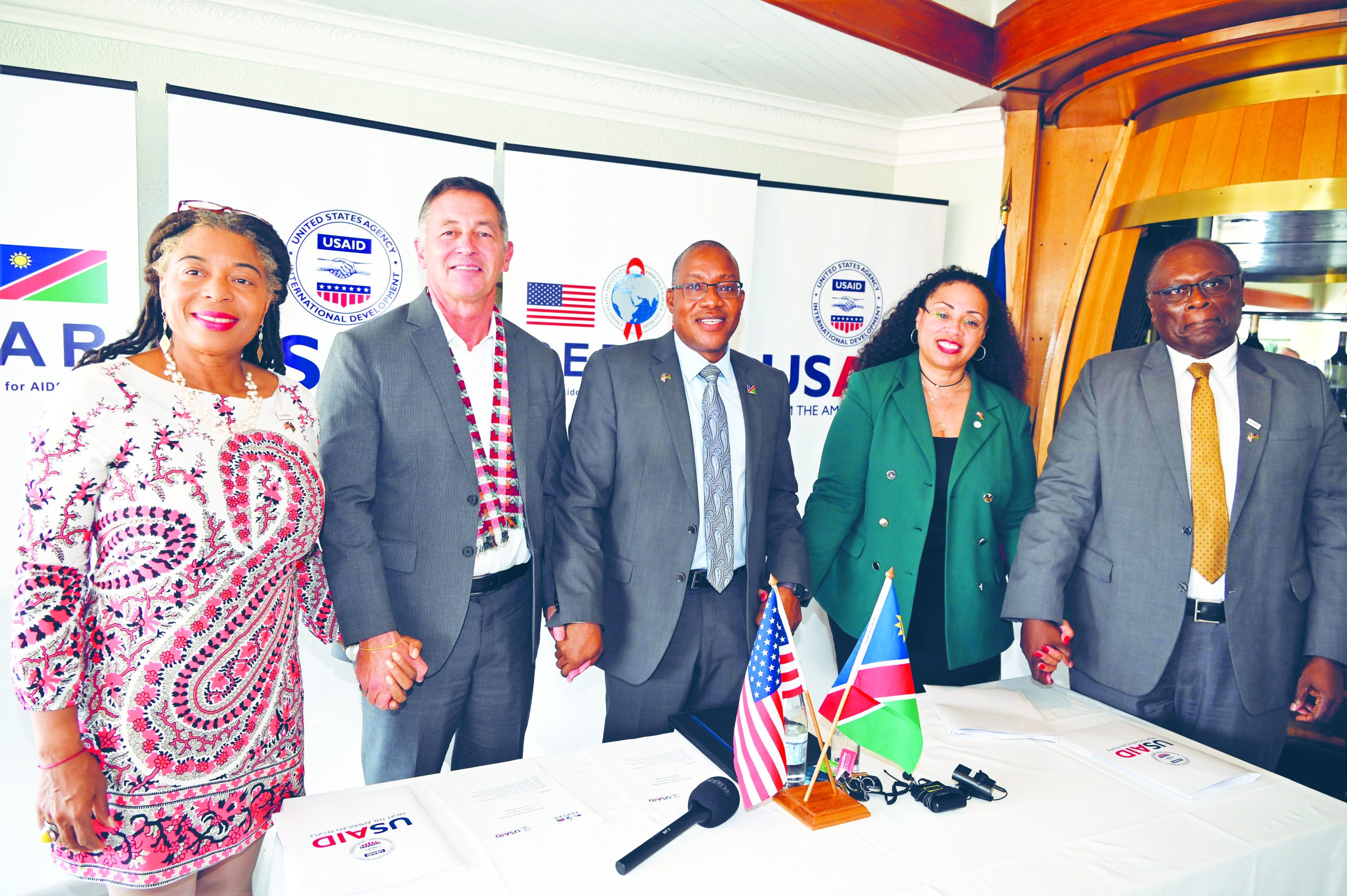US to invest N$840m in new USAID Programme

• By Andre Tino
THE United States President’s Emergency Plan for AIDS Relief (PEPFAR) will invest around N$840 million (US$45 million) towards providing health and social assistance to vulnerable children, adolescents, and youth.
This was revealed by PEPFAR Namibia Deputy Principal for USAID, Tamara Cox, who visited the country recently.
Cox said the five-year ‘Reach Namibia’ programme would be implemented in eight regions where 80 per cent of the population lives.
” HIV orphaned children and youth in these regions will have better access to health and social services to help them avoid contracting HIV and staying AIDS-free,” she said.
The Reach Namibia program will be managed by USAID and implemented by two local organisations, namely Project HOPE Namibia, which will operate in the Khomas, Oshana, Omusati, Ohangwena, Oshikoto, and Zambezi regions, and Intrahealth Namibia, which will work in the Kavango East and West regions.
“Through our Namibia Adherence and Retention Project, Reach Namibia is building on the successes of our DREAMS programme, as well as activities that have improved the lives of orphans and vulnerable children, particularly those living with HIV. Through this new program, USAID will reach previously unreached children and youth, including adolescent boys and men made vulnerable by HIV,” added Cox.
USAID’s Deputy Assistant Administrator for Africa, Maria Price Detherage, accompanied Cox on the formal visit.
Both were in Namibia to learn firsthand about US government programming in the country. They visited various developmental and health projects, such as the Central Medical Store in Windhoek and clinics offering ART (antiretroviral treatment) and VMMC (voluntary medical male circumcision) at the Engela Hospital in the Ohangwena Region.
Detherage lauded Reach Namibia for its emphasis on reinforcing young Namibians and their communities to fulfil Namibia’s Ministry of Health and Social Services (MOHSS) objective of 97-97-97 by 2028.
The 97-97-97 objective means that 97 per cent of the population is aware of their HIV status, 97 per cent of HIV-positive people are on treatment, and 97 per cent of those on treatment have a lower viral load.
According to health ministry executive director Ben Nangombe, Namibia is currently at 92-99-94, placing the country on the verge of becoming an AIDS-free generation.
Before landing in Namibia, Detherage travelled to Angola and Botswana to present USAID’s more extensive strategy for the Sub-Saharan region, including enhanced programming to combat food insecurity exacerbated by climate change and build countries’ resilience to its effects.
“Climate change contributes to increased floods and droughts, which endanger food security across Africa, and Namibia is particularly vulnerable to these adverse weather effects. Food insecurity jeopardises Namibia’s ability to control the HIV epidemic and achieve AIDS-free status because ART adherence is difficult on an empty stomach,” said Detherage.
Since Namibia’s independence, the United States government has assisted USAID, mainly in the health, education, economic, energy, and environmental sectors.
For more on this & other stories: Grab a copy of the Newspaper
